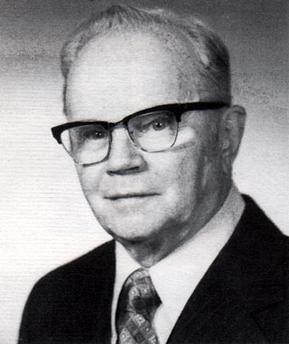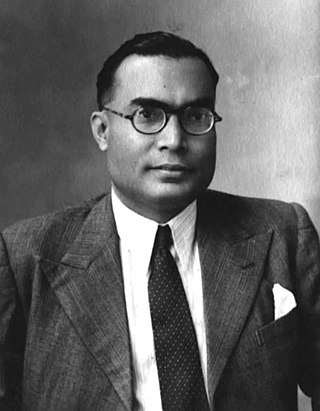Related Research Articles

Electrical engineering is an engineering discipline concerned with the study, design, and application of equipment, devices, and systems which use electricity, electronics, and electromagnetism. It emerged as an identifiable occupation in the latter half of the 19th century after the commercialization of the electric telegraph, the telephone, and electrical power generation, distribution, and use.

Electronics is a scientific and engineering discipline that studies and applies the principles of physics to design, create, and operate devices that manipulate electrons and other electrically charged particles. Electronics is a subfield of physics and electrical engineering which uses active devices such as transistors, diodes, and integrated circuits to control and amplify the flow of electric current and to convert it from one form to another, such as from alternating current (AC) to direct current (DC) or from analog signals to digital signals.

Sir John Ambrose Fleming FRS was an English electrical engineer and physicist who invented the first thermionic valve or vacuum tube, designed the radio transmitter with which the first transatlantic radio transmission was made, and also established the right-hand rule used in physics.
The Royal Radar Establishment was a research centre in Malvern, Worcestershire in the United Kingdom. It was formed in 1953 as the Radar Research Establishment by the merger of the Air Ministry's Telecommunications Research Establishment (TRE) and the British Army's Radar Research and Development Establishment (RRDE). It was given its new name after a visit by Queen Elizabeth II in 1957. Both names were abbreviated to RRE. In 1976 the Signals Research and Development Establishment (SRDE), involved in communications research, joined the RRE to form the Royal Signals and Radar Establishment (RSRE).
Mechatronics engineering, also called mechatronics, is an interdisciplinary branch of engineering that focuses on the integration of mechanical engineering, electrical engineering, electronic engineering and software engineering, and also includes a combination of robotics, computer science, telecommunications, systems, control, automation and product engineering.
This article details the history of electrical engineering.
Sir Eric Albert Ash was a British electrical engineer, past Rector of Imperial College and President of IEE, UK. He was elected an international member of the National Academy of Engineering in 2001 for innovations in optics and acoustics and for leadership in education.

Elmer William Engstrom was an American electrical engineer and corporate executive prominent for his role in the development of television.
John G. Webster was an American electrical engineer and a founding pioneer in the field of biomedical engineering. In 2008, Professor Webster was awarded the University of Wisconsin, College of Engineering, Polygon Engineering Council Outstanding Instructor Award. In 2019, the Institute of Electrical and Electronics Engineers awarded him its James H. Mulligan Jr. Educational Medal for his career contributions. Professor Webster died on March 29, 2023.

William Littell Everitt was a noted American electrical engineer, educator, and founding member of the National Academy of Engineering. He received his Ph.D. from Ohio State University in 1933. He was adviser of numerous outstanding scientists at OSU including Karl Spangenberg, and Nelson Wax. His PhD adviser was Frederic Columbus Blake.

Telecommunications engineering is a subfield of electronics engineering which seeks to design and devise systems of communication at a distance. The work ranges from basic circuit design to strategic mass developments. A telecommunication engineer is responsible for designing and overseeing the installation of telecommunications equipment and facilities, such as complex electronic switching system, and other plain old telephone service facilities, optical fiber cabling, IP networks, and microwave transmission systems. Telecommunications engineering also overlaps with broadcast engineering.

Electronic engineering is a sub-discipline of electrical engineering that emerged in the early 20th century and is distinguished by the additional use of active components such as semiconductor devices to amplify and control electric current flow. Previously electrical engineering only used passive devices such as mechanical switches, resistors, inductors, and capacitors.
Keith Glover FRS, FREng, FIEEE is a British electrical engineer. He is an emeritus professor of control engineering at the University of Cambridge. He is notable for his contributions to robust controller design and model order reduction.
David Keun Cheng was a Chinese-born Professor of Electrical Engineering. He was known for his work in the field of electromagnetics. His 1983 undergraduate textbook Field and Wave Electromagnetics has been cited in more than 4000 publications and in 2016 is in the collections of about 500 libraries around the world.

Ramadas Panemangalore Shenoy was an Indian defence scientist and writer, known for his contributions in the field of radar technology. He secured a doctoral degree in electrical engineering from the University of Wisconsin–Madison and joined Defence Research and Development Organization in 1961, involving himself with the indigenous development of radar technology till his retirement, as a Distinguished Scientist, in 1989.
Paranandi Venkata Suryanarayana Rao is an Indian computer scientist, known for his research in the fields of speech and script recognition and is credited with contributions to the development of TIFRAC, the first indigenously developed electronic computer in India. He is a recipient of awards such as IEEE Third Millenium Medal, Vikram Sarabhai Award, Om Prakash Bhasin Award and VASVIK Industrial Research Award. The Government of India awarded him the fourth highest civilian honour of Padma Shri in 1987.
William Ewart John Farvis was a pioneering electronics engineer and educator. His war-time service was in electronic countermeasures. In his subsequent career at the University of Edinburgh he initiated the Department of Electrical Engineering, establishing its capabilities in silicon device processing and enhancing industrial interactions through Wolfson Microelectronics.
Norman Moody was a British-Canadian electrical engineer.

Prof. Siddheshwari Prasad Chakravarti was an Indian engineer, researcher, and educator. He was known as the father of electronics and telecommunications engineering in India.
References
- ↑ Ceramic Educational Council, National Institute of Ceramic Engineers, American Ceramic Society (1965) Systems engineering in ceramics: proceedings of a symposium, 19 April 1964. p. 3
- ↑ Book about experiences of dyslexic academics and artists is published: Press Release – 22 June 2007. Retrieved 25 May 2013
- 1 2 William Gosling (1999) Radio Spectrum Conservation: Radio Engineering Fundamentals General info
- ↑ About William Gosling at marchofinvention. Retrieved 26 May 2013
- ↑ International Telecommunication Union (1979) World telecommunication forum.